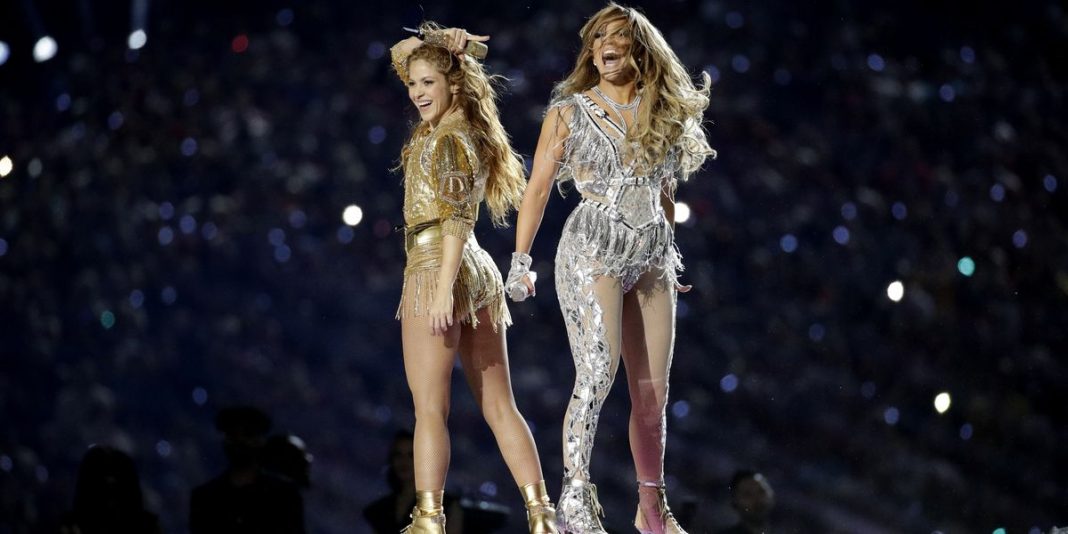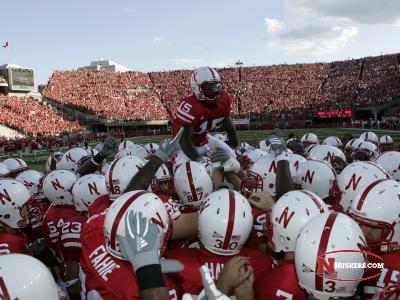When the dust settles after the Super Bowl each year, the annual cultural commentary kicks into high gear. The usual morality play takes shape with the cultural left claiming that ads weren’t progressive enough, or that certain groups were under-represented, while the cultural right finds further evidence of cultural decadence and moral decline. The halftime show is usually the centerpiece of the dialogue, as it reveals underlying worldview assumptions and lets everyone know what parts of the cultural agenda are relevant. This year, the messages were certainly loud, but were they clear? It seems to me, that the messages sent about women through the Super Bowl spectacle were confusing to both men and women, something the left and the right should agree on.
Response from the cultural left and the celebrity class is mostly as expected thus far, interpreting the halftime show as progress for women since the two halftime headliners, Shakira and Jennifer Lopez, were Latinas. This choice was certainly not a coincidence, as the Los Angeles Magazine article back in September makes clear: “For The First Time, Two Latinas Will Helm the Super Bowl Halftime Show.”
Consider a brief sampling of headlines and tweets since the big game.
. @JLo and @shakira and all the special guests were so incredible!!! What a fun halftime show I danced and smiled the whole time. Such powerful sexy women!!!! On camera and off!!!!! Love you beautiful sexy talented women ?? #SuperBowlHalftimeShow #SuperBowl
— Lady Gaga (@ladygaga) February 3, 2020
Thank you @jlo for a night that shows how much Latinos have to offer! #SuperBowl #PepsiHalftime pic.twitter.com/Pe2kzFxUNR
— Shakira (@shakira) February 3, 2020
USA Today ran a piece: “Jennifer Lopez, Shakira’s Super Bowl halftime show sparks debate: Empowering or objectifying?”
Yahoo Finance, already claimed the progress narrative with their headline: “Super Bowl 2020 ads, halftime show emphasized women & equality.”
But upon closer analysis, is all of this really progress? Did the halftime concert show us “how much Latinos have to offer?” Did the Super Bowl ads and halftime show really emphasize women and equality? I suggest it would be more accurate for Yahoo’s headline to read: “Super Bowl 2020 ads emphasized gender sameness, halftime show emphasized female objectification.”
The concluding scene of the halftime show reveals (pun intended) all one needs to know about it. My family and I try and avoid the halftime show, and come back just in time for the third quarter, but this year my timing was a bit off, and we returned to the TV only to find a close-up shot of two scantily clad women’s hind-quarters shaking and gyrating while on a raised platform surrounded by other near-naked male and female bodies, kneeling, prostrating and reaching out towards the elevated voluptuous figures of Shakira and JLo. All this was accompanied by huge cheering crowds. Further discussion with co-workers, high school students in my classes, and a quick internet search made clear that the final image of the halftime show epitomizes the whole show, which included stripper poles and overtly sexual bodily movements. What does this all say about women, and furthermore, where does this leave men in their relationships with women?
Mixed Messages to Women
The message of the halftime show confuses women. What should women strive to be? Did the halftime show really display, as Shakira tweeted, “how much Latinos have to offer” as if all they have to offer is their bodies? Think of the average American young girl who is left hanging to parse meaning out of these confusing messages; on the one hand culture tells them take a stand against the objectification of women, but on the other hand it tells them to shake their tail feathers and open their legs on camera.
Mixed Messages to Men
The halftime show also puts the male conundrum in bold relief, as men are left to wonder how women really want to be treated. Are women of equal personal worth, with intriguing intellects and beautiful modesty, requiring that they be looked in the eye? Or are women objects, with titillating bodies and a raunchy immodesty, requiring that their body parts be drooled over? Again, the concluding image of the halftime show speaks volumes. It was not their faces that the camera focused on, as if to engage in conversation, but on their jiggling butts for others to ogle at. The singers themselves turned around in this regard as if to endorse such objectification. This leaves men in a lurch, not knowing how to view co-workers, friends, or possible future spouses. If men guess wrong, there are large cultural prices to pay.
The Only God Left: Sex
The halftime show reveals that when moral foundations and meaningful narratives fostered through religious commitments are on the decline, the only thing left is appetitive desire, and highest in the pantheon of desires is the God of sex. Sex indeed is powerful and creative; it is the only human act that can create new life. The inherent power and beauty of sex is essential to life and should be valued and treasured. The halftime show certainly communicated that in one sense. However, when unhinged from moral absolutes, sex loses its proper context, and what actually seems to be a valuing of sex, ends up cheapening it, as a product to be sold, or a voyeur show to be watched. The concluding scene of the halftime show is especially telling in this regard as the scene had an eerily religious structure to it. Shakira and JLo were elevated on a platform as if goddesses, and were surrounded by other dancers who were bowing, prostrating as if worshipers. The crowd voiced their approval with loud cheers and raised hands in celebrations of praise to all that modern society has left; the titillating rush of sexual gratification.
Shadows of the Truth: The Last Remnant of Sex Differences
With biting irony, the halftime show also uncovers perhaps the last cultural remnant of acknowledged sex differences. Of course, only male bodies were playing the rough-and-tumble game on the field. And in a distorted way, Shakira and JLo communicated loud and clear that the male and female body are not the same. It was not two male performers who shook their booties on the stage, but two females. The only male singers in the show were fully clothed from head to toe. The beautiful otherness of male and female was on display, perhaps too much on display with butt shots, crotch shots, and stripper poles to boot. But nonetheless, it was a dim reflection of the truth of sex differences.
A Way Out of the Contradictions

There is a way out of this complex web of competing messages. What was on display in the halftime show was not a celebration of sexuality or empowerment for women. It was an elevation of instinct. The creative power and beauty of sexuality is rightly celebrated in the proper context of male-female marriage, and when its creative force brings life into the world. Women and men are rightly valued as equals when equality is understood to refer not to their fungibility but to their complementarity, which functions by the principle of gift; that men and women, in their relationships with one another, sacrificially give of themselves in counterbalancing ways. The ultimate gift in this context is the self-giving act of marital love, which births new life and brings husband and wife further outside of themselves into the satisfying self-giving of child-rearing. This is a true celebration of sex and is the ultimate experience of empowerment.
This perspective also fully recognizes the inherent beauty and erotic otherness of the two sexes, and the fact that they are biologically and physiologically ordered towards one another. These embodied differences are not just accidents biology, genetics, or physiology. They are a profound mystery. More profound than the best dance moves of Shakira and JLo.
But so many men and women aren’t even aware of this better way, only being familiar with the messages of popular culture, or the trite “thou shalt nots” of a by-gone Fundamentalism. If the choice is between pop culture’s message of uninhibited expression versus a prudish list of do’s and don’ts, well, we know who wins; Shakira told us at the halftime show, the “Hips Don’t Lie.” The lonely “thou shalt nots,” quickly crumble in the face of our alluring sexualized culture.
However, there is a more enjoyable, longer lasting pleasure out there. Men and women can see beyond the fleeting pleasures of a near-bestial view of sexuality peddled by pop culture when they realize that what they can then say yes to is far better: the deep and lasting fulfillment found in faithful monogamy, which allows erotic love its fullest expression and brings eros to its proper fulfillment in agape (sacrificial) love. So, when someone asks you, “Did you see the Super Bowl halftime show?” Perhaps a good response would be, “No, I saw right through it.”













Popular culture is filth.
It’s tragic that there’s not been the slightest bit of outcry about the halftime show. My guess is the answer is partly that everyone who cares about not seeing stripper poles on the biggest cultural stage has given up. But I suspect a bit of a fear of being called racist is part of it as well, as if being of Hispanic origin gives an immunity from criticisms of acting indecently. Which if you think about it for two seconds is awfully darn racist.
Didn’t watch it but saw some clips. The long and short of it is, if this is what our culture now deems “family entertainment” we are in very deep trouble.
Josh,
The only male singers in the show were fully clothed from head to toe.
So you missed last year’s halftime show, I guess?
Russell,
Indeed I did miss last year’s halftime show because my timing with the remote was better. You’re point is well taken; the male body has become hyper-sexualized in our culture as well. However, I found that topic beyond the scope of this brief essay. It certainly would be a topic well worth expanding, and would further confirm that the only God left in pop culture is sex. Thanks for engaging with the article and raising an important point.
Cheers,
Josh
I would say the only God left in pop culture is money rather than sex, but as history and the Bible teach us, they are too often one the same. Well said, Josh.
So women danced in skimpy costumes and the world is coming to and end.
Cry me a river. I’ll believe this right-wing screeds about ‘respecting women’ are genuine a week after you all quit trying to ban abortion and birth control, pass laws prohibiting businesses from firing pregnant workers and mandate family leave. You want women to be the helpless worthless property of their husbands, groveling to whatever loser with a penis can be forced to take us so that we can continue to eat and live indoors. A traditional woman is nothing but a womb attached to a scrub brush — her body is all she has to offer. Don’t complain when we try to offer those bodies to get the best deal possible.
Karen,
If you truly believe that pushing medication on women that denies the reality of their bodies and allowing women to slaughter their children when that reality (and beauty) rears its ugly head and functions as it was intend to are required to respect women, I can’t help but think you are gravely mistaken.
There need not be a dichotomy between the “sexually liberated modern woman” and the caricature of traditional femininity that is the “traditional woman” you’ve described above. Women are infinitely more valuable than either of those modes of operation.
Actually your post is quite a bit like J-Lo’s performance–tired, boring, unoriginal, a sad attempt to be provocative, etc. Try harder.
The notion that a man with his shirt off is analogous to J-Lo’s performance is fundamentally unserious.
I would delight in reading your comprehensive theological, anthropological, sociological, psychological, and biological explanation as to why, Brian. Do take your time; I’m genuinely interested to learn all about your informed perspective here.
You first, prof.
Why? You made the claim, not me.
I said your comparison was unserious. Because it is. If I wanted to write essays at your command, I’d sign up for your class.
What command? It was an invitation (the response to which I’d be delighted to read). My experience is that the majority of those who flatly dismiss an idea as “unserious” have a hard time articulating why that is, but I’m always willing to learn more in that regard.
I find the halftime show far less objectionable than the game: Two groups of mainly black men inflicting traumatic brain injuries on each other while making money for and entertaining a bunch of far richer white men and a predominantly white audience. Then add to that the NFL’s continual celebration of the military-industrial complex. I think the only moral response is to give the whole thing a hard pass.
Joe’s response is the correct one. (For whatever it’s worth, I missed the whole thing, and my wife and three daughters tuned in solely for the halftime show; they’re big fans of music and theatrics and Zumba, and were as a result delighted, or so they told me. Kansans though we are, we didn’t find out about the comeback win until later.)
Hmmm. One would think that all the arse-shaking and crotch shots would have put them off.
I reluctantly watched the first half of the game with some friends but left before half-time. Having seen a couple previous halftime shows I pretty much knew what was coming.
Frankly, I’m hugely put off by the entire consumerist/materialist thing — which of course has a rather large sexual component to it. To reduce the whole thing to class is just as wrongheaded as it is to reduce it to sex.
I can only go off of what they reported, but assuming I take their responses that evening to be an accurate account of their own viewing experience, it would appear that whatever crotch shots there were seems to have struck the displeased menfolk on this thread (kudos to Karen for being the only non-male who has thought it worth commenting) as much more central to the whole performance than they did. As for the arse-shaking, well, like I said, they love Zumba at the Y. It’s a thing.
To reduce the whole thing to class is just as wrongheaded as it is to reduce it to sex.
Completely aside from the particulars of this thread, that strikes me as a principle both generally true and worth keeping in mind.
I liked the punch line/ending of this essay, all the more because the title/headline immediately made me skeptical before reading it: so, mixed messages are bad? What’s the alternative — some kind of dogma from religion or progressivism? Seriously, can’t we survive with a live-and-let-live attitude where multiple viewpoints are acceptable, thus multiple messages are available for people to CHOOSE freely?
Well said, Martin. That is largely the impetus for writing the article, because my high school students in class have never heard these alternative ideas before as they are so influenced by pop-culture messages they imbibe at such astounding rates each day. When they brought up the halftime show in my class, they had never really considered the alternative points I raised, or that there really is even a choice out there; thus the article. For the marketplace of ideas to work, different worldviews and their accompanying assumptions need to be put on the table. Only with a true free exchange of ideas does it truly function as it should. The challenge is, such a real exchange of ideas is so rare and difficult to accomplish. Thanks for engaging with the piece.
Cheers,
Josh
Thanks, Josh for accepting my comment as resonance. As I said, I was worried by the phrase “mixed messages” in the title, which is often a code word for “someone is presenting messages other than the ONE that my teams supports”. Another phrase to alert your students to is “by all means necessary” which is usually a red flag indicating some kind of fanaticism, as in “stop that politician/nominee by all means necessary” (regardless of the constitution, traditions like innocent until proven guilty, or the possibility of setting a bad example by turning ideology into idolatry).
The music, the gyrations and the pornographic gestures and suggestions are little different from those of thousands of cheer squads which “grace” Friday night high school football and Saturday night college football, and even basketball games; the only difference is that they are hyped, carried out by rich celebrities, and nationally broadcast. A quick look-around at most high school proms will render a very similar message.
Comments are closed.